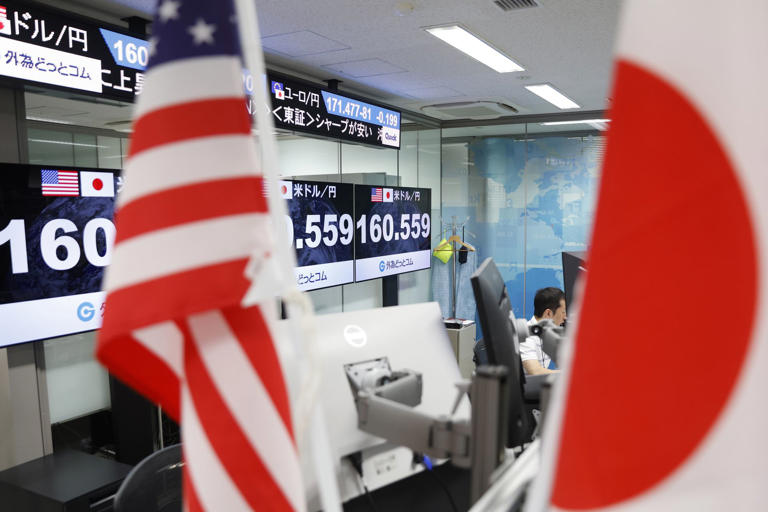Japan’s recent decision to appoint Atsushi Mimura as its top currency diplomat highlights the urgency with which the country is addressing the yen’s significant depreciation against the US dollar. This move comes at a critical time, as the yen recently hit its lowest level in 38 years, reaching a rate of 161.27 per dollar on June 28, 2024. Mimura, known for his expertise in financial regulations, has taken over from Masato Kanda, who notably oversaw Japan’s largest yen-buying intervention earlier in the year to counteract speculators driving the currency’s value down.
The weakening yen carries profound implications for Japan’s economy, influencing both its export-driven sectors and domestic consumers. On the one hand, a weaker yen makes Japanese exports more competitively priced in international markets, benefiting exporters such as automotive and electronics manufacturers. This boost in export competitiveness can stimulate economic growth and employment. On the other hand, a depreciating yen increases the cost of imported goods, leading to higher prices for consumers. This inflationary pressure can erode purchasing power and strain household budgets, impacting overall consumer sentiment and domestic demand.
Finance Minister Shunichi Suzuki underscored Japan’s concerns about the yen’s volatility during a recent press conference, emphasizing the government’s commitment to stability in the currency markets. He expressed worries about the economic repercussions of abrupt and one-sided movements in the yen’s exchange rate, highlighting the government’s readiness to take appropriate measures to manage these fluctuations.
One of the primary challenges facing Japanese policymakers is the interest rate differential between Japan and the United States. While the US Federal Reserve has been gradually raising interest rates to combat inflation and normalize monetary policy, the Bank of Japan has maintained an ultra-loose monetary stance to support economic recovery and achieve its inflation targets. This divergence in monetary policy settings has put downward pressure on the yen, as higher interest rates in the US attract global capital flows away from Japan.
Market analysts anticipate that Japanese authorities may intervene in the currency markets if the yen approaches critical levels, such as 164.50 yen per dollar. This intervention would aim to stabilize the yen’s value and prevent further depreciation that could exacerbate inflationary pressures. Daisaku Ueno, chief currency strategist at Mitsubishi UFJ Morgan Stanley Securities, suggests that preemptive intervention could occur to maintain stability and support economic objectives.
Looking ahead, Japan’s strategy under Mimura’s leadership will be closely watched for its effectiveness in managing exchange rate stability amidst global economic uncertainties. The ongoing dynamics in global monetary policies and economic conditions will continue to shape Japan’s approach to currency management, influencing its export competitiveness and domestic economic resilience. As such, the yen’s trajectory remains intertwined with broader economic developments, requiring a nuanced and proactive response from Japanese policymakers to navigate these challenges effectively.
